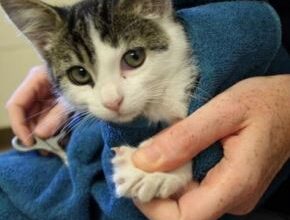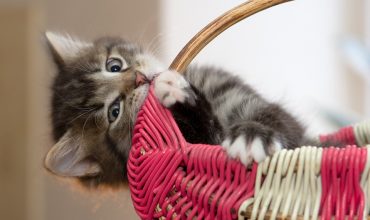Why Do Some Cats Eliminate Outside the Litter Box? Litter box use problems in cats can be diverse and complex. Behavioral treatments are often effective, but the treatments must be tailored to the cat’s specific problem. Be certain to read the entire article to help you identify your particular cat’s problem and to familiarize yourself with the different resolution approaches to ensure success with your cat. Litter box Management Problems If your cat isn’t comfortable with her litter box or can’t easily access it, she probably won’t use it. The following common litter-box problems might cause her to eliminate
Read More
Archives for Pet health
Choosing a place to board your pet
Choosing a safe and responsible boarding home or facility for your beloved pet is an important part of planning a getaway. With many unregulated and unlicensed homes and facilities providing these services, your pet’s health and safety can be put at risk. So how do you pick? Here are a few things to consider: 1. Word of Mouth. Unfortunately, anyone can run a boarding facility and can do so without regulation. And websites that match families with pet boarders do very little to enforce quality care. Testimony from those we trust can often be a good safeguard in choosing someone
Read More
Submissive and Excitement Urination
[print-me] Submissive Urination Submissive urination occurs when a dog feels threatened. It may occur when he’s being punished or verbally scolded, or when he’s approached by someone he perceives to be threatening to him. It’s important to remember that this response is based on the dog’s perception of a threat, not the person’s actual intention. Submissive urination may resolve as your dog gains confidence. You can help to build his confidence by teaching him commands and rewarding him for obeying. You should also gradually expose him to new people and new situations and try to make sure all of his
Read More
Trimming Cat Claws
[print-me] The act of trimming your cat’s nails can seem like a daunting task, but there is good news: A team of people working with a cat can get a nail trim done in 20 seconds flat. A little trickier is doing this alone, but rest assured, it can be done! Unfortunately, there is also bad news: Many cats are not tolerant of nail trims, and many people are not skilled in the process. Below are some pointers that will hopefully help cat owners keep their cats’ nails trimmed. 1. Know those nails! Most cats have 18 nails (five on
Read More
Unusual eating habits in dogs and cats
[print-me] Dogs and cats will sometimes eat socks, rocks or other objects, which may result in a variety of problems for both you and your pet. Not only can your possessions be destroyed or damaged, but objects such as clothing and rocks can produce life-threatening blockages in your pet’s intestines. Eating non food items is called pica. A specific type of pic is stool eating (either their own or that of another animal) and, while not necessarily dangerous to the animal, is probably unacceptable to you. Stool eating is called coprophagy. The causes of pica and coprophagy are not known. Many ideas have been proposed by various experts, but none have been proven or disproven. Such behaviors may sometimes be attention-getting behaviors. If engaging in one of these behaviors results in some type of social interaction between the animal and his owner (even a verbal scolding) then the behavior may be reinforced and occur more frequently. These behaviors may be attempts to obtain a necessary nutrient lacking in the diet, although no nutritional studies have ever substantiated this idea. They may also stem from frustration or anxiety. It’s possible behaviors begin as play, as the animal investigates and chews on the objects, then subsequently begins to eat or ingest them. It has been suggested that coprophagy is carried over from the normal parental behavior of ingesting the waste of young offspring. Some experts believe coprophagy occurs more often in animals who live in relatively barren environments, are frequently confined to
Read More
Managing scratching
[print-me] By nature, cats have a need to scratch objects in their environment. We know that cats leave their scent behind when they scratch things and that this is a means of letting the world know that they’re there… whether it is to warn another cat away or to invite them to play. They tend to go back to the same spots and scratch those spots repeatedly for this reason; it’s another way for them to mark their territory. Even cats who have been declawed will try to scratch things for this very reason! Scratching also happens in play, as
Read More









